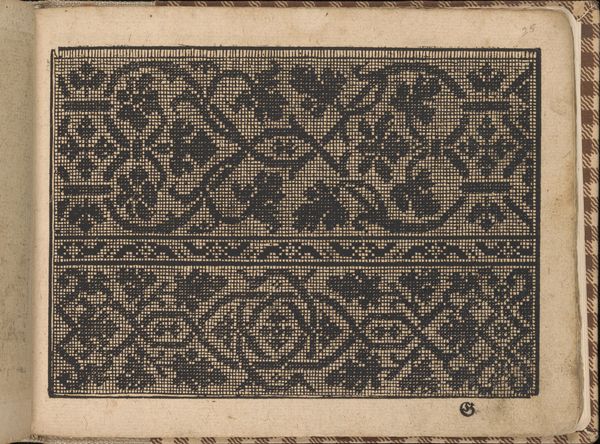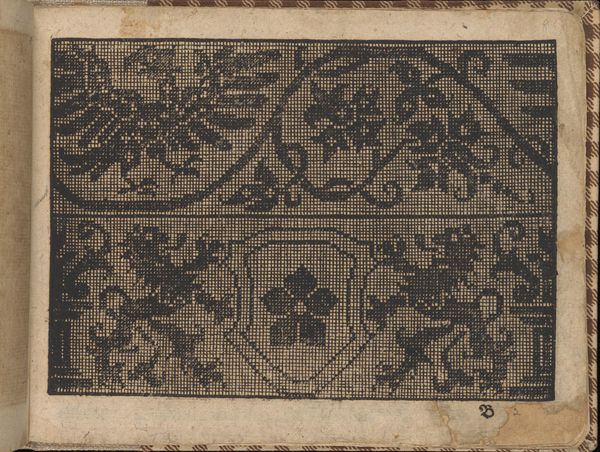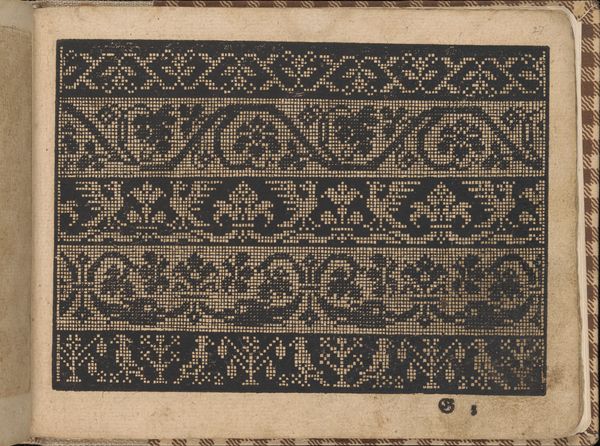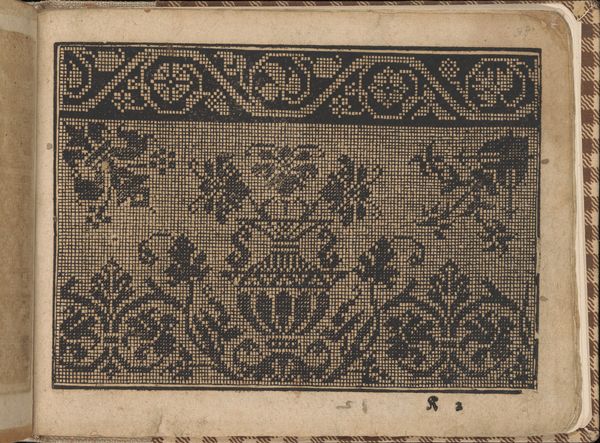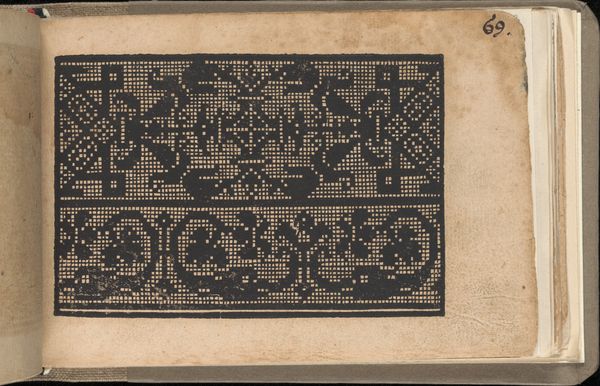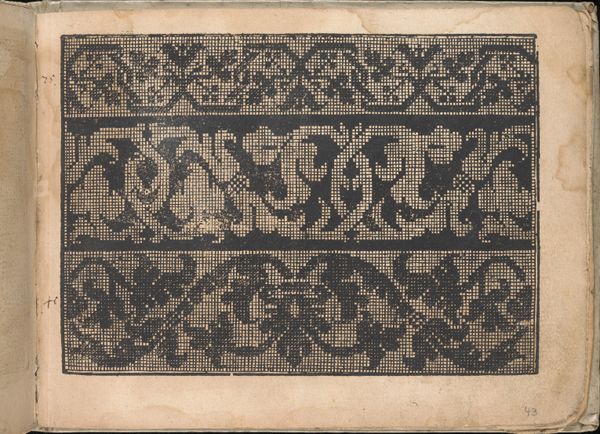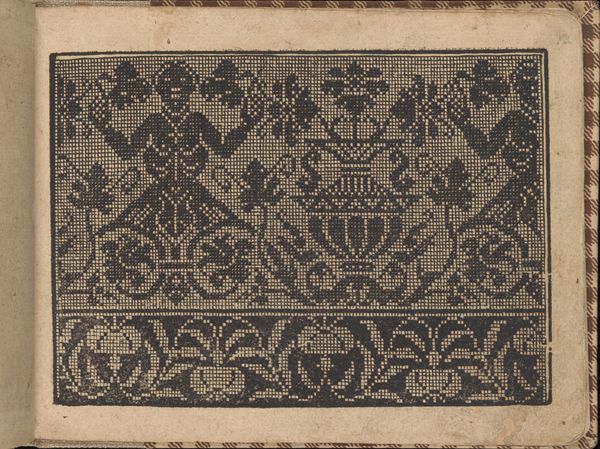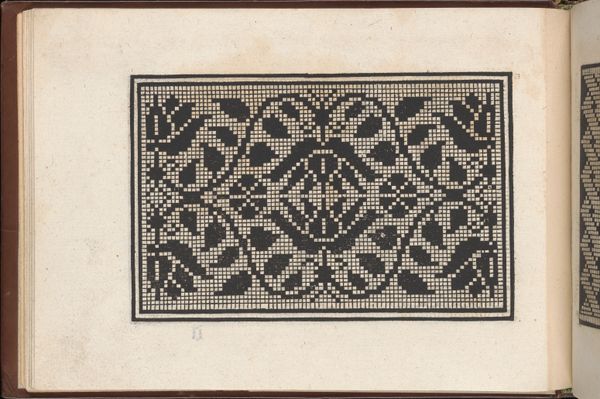
# print
#
geometric
#
line
Dimensions: Overall: 6 5/16 x 8 1/4 in. (16 x 21 cm)
Copyright: Public Domain
Curator: This densely patterned image is from a book made around 1600, specifically page 33 from Bernhard Jobin’s “New Künstlichs Modelbuch.” It’s a print, a design intended as a model for needlework. Editor: My immediate impression is how intricate and mesmerizing the piece is. The fine lines create a sort of visual texture that seems almost woven. The black against the pale ground is stark and creates dynamism, but I'm not sure that I would wear it. Curator: As a design source, it would have offered women access to fashionable patterns and allowed for a creative and economic outlet in the household. It's important to think about women's creative labor in this period as valuable, skilled work, even when undervalued in broader patriarchal structures. The act of reproduction here also allows a closer connection between women of different classes because some women could afford to own art while the average working-class woman could now design their own by copying it. Editor: The geometric shapes are certainly captivating. Take the central motif, that complex knot, for example. It echoes traditional interlace patterns, a classic element of design, full of symbolism in and of itself. It speaks to interconnectedness, perhaps continuity, but also serves as an incredibly pleasing compositional element that creates a strong focal point. Curator: Right, and considering the context of the period, needlework was also a socially sanctioned means of expressing female artistry within strict societal expectations. These patterns gave a sense of structure and the expression of taste that we can still relate to now, it created identity, allowed an insight into the trends, and even how labor was organized within the house. Editor: Looking at the linear elements—the vine-like motifs interspersed with foliage, all meticulously laid out—there's almost a kind of controlled chaos. It's as if a grid is overlaid with organic growth, a structured tension playing across the entire surface, creating contrast to draw the eye across the plane of design. Curator: Considering this artwork reveals the historical realities of the 17th-century design processes as women, with constrained choices, appropriated these patterns, subverting constraints through creativity, while these patterns became carriers for their creativity within tight-knit boundaries, contributing both cultural and social currency. Editor: After careful study, I’m struck again by the interplay of geometry and fluidity. It invites us to slow down and consider the very process of seeing, to decode how these combined forms lead us through design—it speaks to both mathematical rigor and artistic whim, wouldn’t you say?
Comments
No comments
Be the first to comment and join the conversation on the ultimate creative platform.
